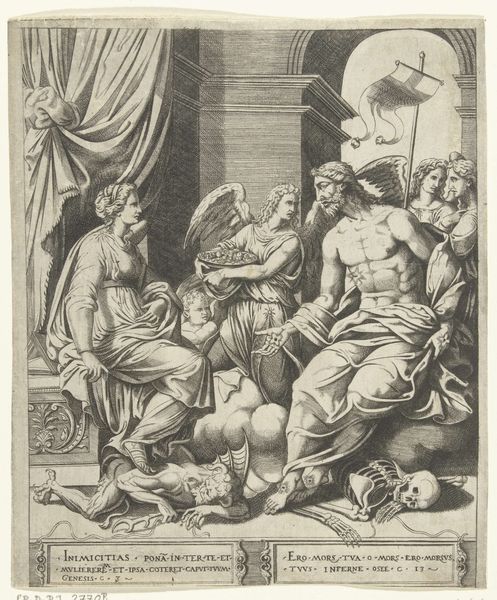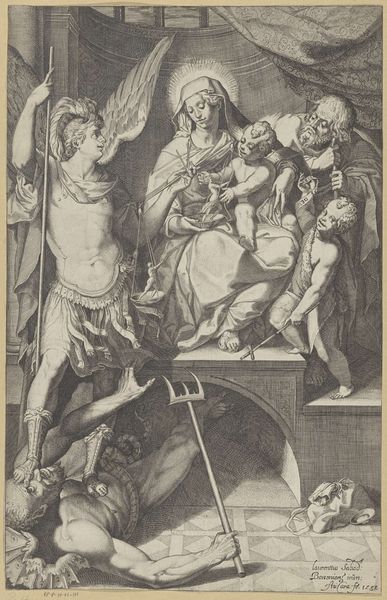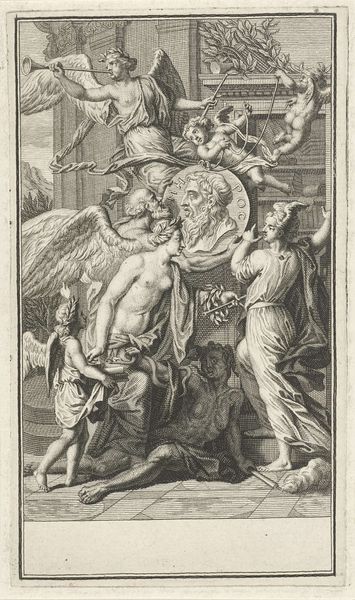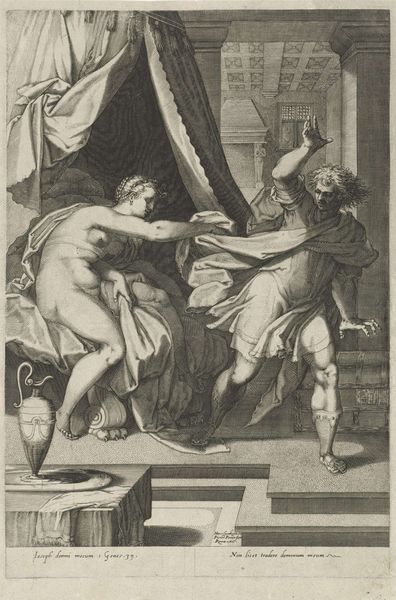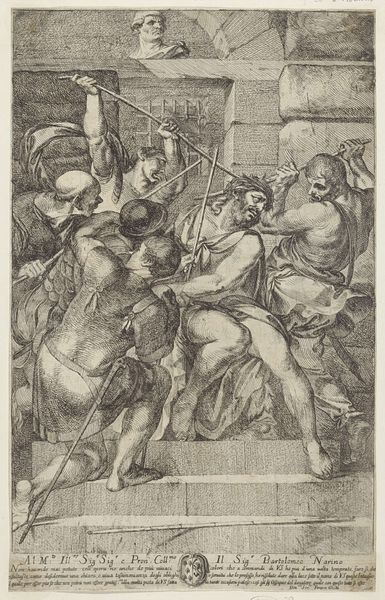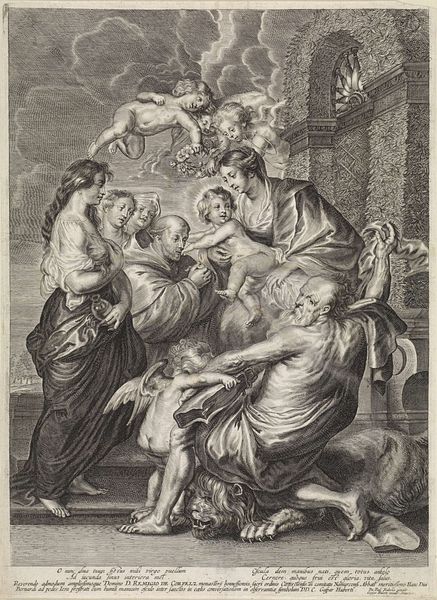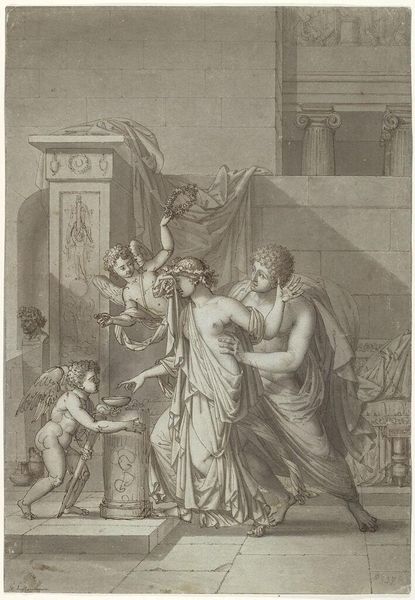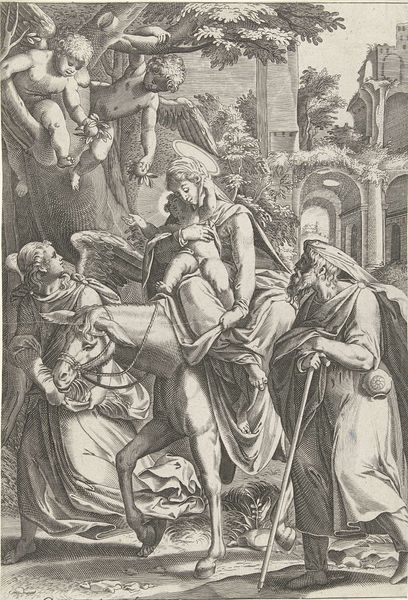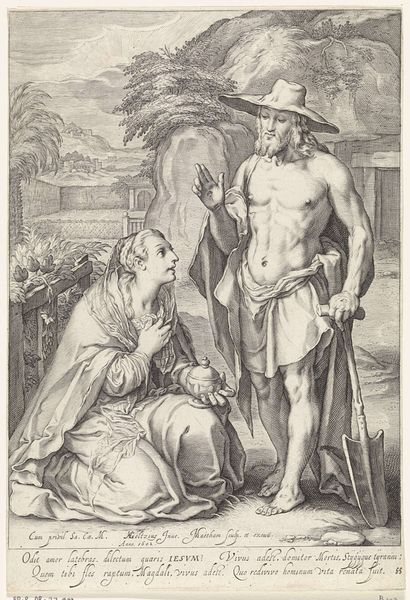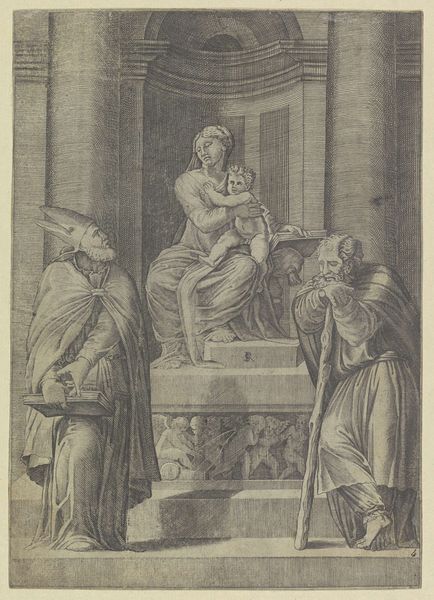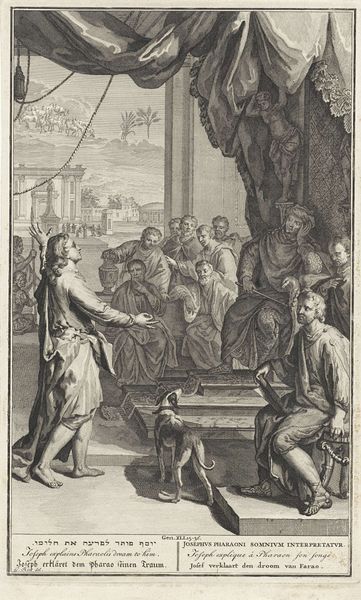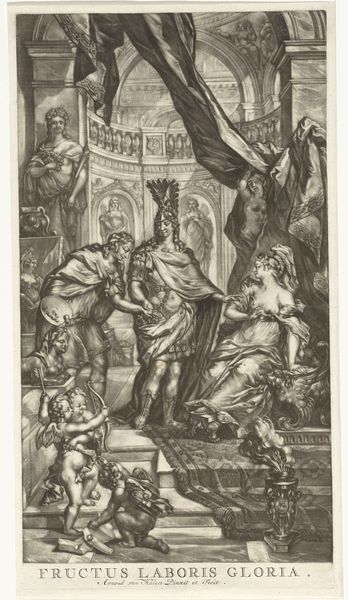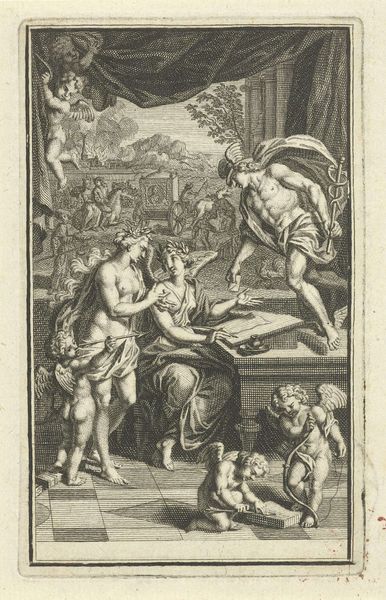
print, engraving
#
narrative-art
#
baroque
# print
#
figuration
#
history-painting
#
engraving
Dimensions: height 171 mm, width 114 mm
Copyright: Rijks Museum: Open Domain
Curator: Adriaen Lommelin produced this engraving, "Onthoofding van Johannes de Doper"—that's "The Beheading of Saint John the Baptist"—sometime between 1630 and 1677. It's currently held at the Rijksmuseum. It clearly places itself within the Baroque style. Editor: Ugh, that's intense! Right off the bat, it gives me a sort of morbid, almost theatrical feeling. All that detail squeezed into such a small space, makes you lean in real close. It feels both distant and right in your face. Is it me or is Baroque about a kind of visual shock value? Curator: The Baroque often does use drama to provoke an emotional response, especially when dealing with religious themes. We're dealing here with not only religion but with narratives around power, gender, and the interpretation of history itself. Salome, as depicted, is often positioned within discourses about female power, particularly the power a woman holds within patriarchy, her influence over men. The dance, the request, it becomes this point of intersection for politics and gendered violence. Editor: Salome seems detached in the artwork. Almost like she's holding a serving dish. Like, "Here's your head, sir, enjoy." It’s creepy how everyone but John seems kind of unmoved by this brutal act. What's wild is how that guy holding the sword is kinda standing on John's body. Curator: Absolutely, the physical dominance depicted amplifies the narrative. Note the religious structure barely visible in the background – the engraving implicates religious structures as almost passively witnessing, or even sanctioning, the act of violence, a frequent critique within postcolonial and feminist biblical criticism. Editor: The inscription along the bottom is, if my archaic Dutch is correct, about this holy head ending up as a dancing fee for a light woman in Mechelen? Seriously twisted party favor, if you ask me. There's an energy that sort of glamorizes this too; its pretty dark. Curator: Early modern prints circulated imagery widely. Therefore, prints like these also become incredibly powerful forms of commentary that work in the context of religious wars, shifting political powers, etc. I always find myself reflecting on why certain stories and images get repeated so often and across so many cultures. Editor: Seeing that contrast, all those narratives at play, is definitely making me rethink this piece. Still deeply disturbing, but with layers upon layers. Curator: And ultimately a stark representation, wouldn't you agree, of power structures then and now?
Comments
No comments
Be the first to comment and join the conversation on the ultimate creative platform.
